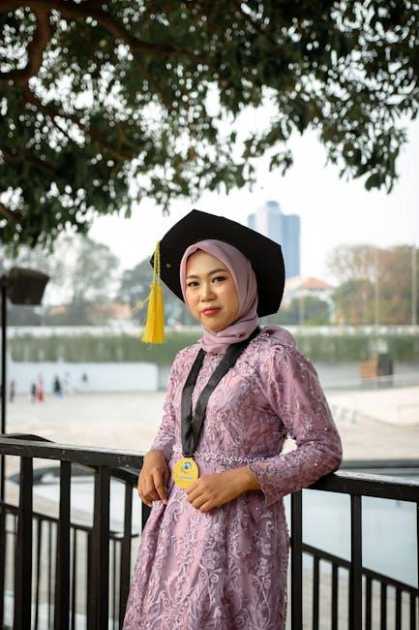Crafting a compelling Statement of Purpose is akin to painting your own portrait; it is an opportunity to showcase not only your academic journey but also the intricate layers of your aspirations and motivations. In a world where frist impressions can determine the course of your future, this document becomes a canvas on which you express your intellectual passions, professional goals, and unique perspectives. Whether you’re applying to graduate school, a specialized program, or a competitive scholarship, understanding how to articulate your thoughts and experiences will set you apart from the crowd. In this article, we will explore the essential elements of a perfect Statement of Purpose, guiding you through the process of weaving personal anecdotes with academic achievements, crafted with clarity and purpose. Join us as we unlock the secrets to creating a masterpiece that captivates admissions committees and propels you toward your academic dreams.
Understanding the Purpose and Significance of a Statement of Purpose
Crafting a statement of purpose is akin to penning a personal narrative that encapsulates your journey, aspirations, and the driving forces behind your academic and professional pursuits. Its primary role is to provide admission committees with a glimpse into your unique experiences and motivations,illustrating why you are a compelling candidate for their program. A well-articulated statement serves not only to highlight your qualifications but also to establish a personal connection with the reader, allowing them to see beyond the grades and test scores. As such,it is essential to effectively convey the ingredients that make up your academic identity,including:
- Your academic background – Discuss relevant courses,projects,or research.
- Professional experience – Highlight internships, jobs, or volunteer work relevant to your field.
- Future goals - Elaborate on your career aspirations and how the program aligns with these objectives.
- Personal anecdotes – Share stories that shaped your perspectives and interests.
Moreover,the significance of this document extends beyond mere submission requirements. It acts as a reflective exercise, allowing you to clarify your thoughts and intentions regarding your future. Engaging in this introspective process can illuminate your strengths, weaknesses, and the specific areas you wish to cultivate through advanced education. Ultimately, an effective statement not only enhances your candidacy but allows you to:
- Demonstrate commitment – Showcase your passion and dedication to the field.
- Stand out – Set yourself apart from the multitude of applicants.
- Articulate fit - Convey how the program aligns with your academic and career aspirations.
- Exhibit writing skills – Reflect your ability to communicate effectively in writen form.
Crafting a Compelling Narrative: establishing Your Unique Voice
When you begin to craft your statement of purpose, think of it as your personal narrative—a canvas where you paint your unique story using your experiences, aspirations, and values.To do this effectively, center your writing around a clear theme that reflects your academic journey and future goals. You might choose to focus on pivotal moments that shaped your decisions or challenges that forged your resilience. Remember, the key is to infuse your personality into the writing, making it engaging and authentic.Here are some aspects to consider:
- Reflect on your Journey: Highlight formative experiences that led you to your chosen field.
- Showcase Personal Growth: Discuss how challenges contributed to your growth.
- Connect with Your Audience: Utilize relatable language and anecdotes to draw in the reader.
Establishing your unique voice also involves understanding the balance between professionalism and authenticity. Your statement should not only convey your qualifications but also resonate with emotions that reflect your passion and commitment. Aim to make a personal connection by sharing insights into your motivations and aspirations. A well-crafted narrative can be further enhanced by the use of tables that succinctly outline your achievements or goals:
| Achievement | Year |
|---|---|
| Research Internship | 2022 |
| Leadership Role in Club | 2021 |
| Published Article | 2023 |
This concise format can highlight your qualifications and make your narrative more compelling,while also underscoring your unique point of view. Aim for a harmonious blend of storytelling and factual depiction; this dual approach will ensure that your statement stands out in any application review process.
Highlighting Relevant Experiences: Connecting Your background to Your Goals
Emphasizing your past experiences is crucial in creating a compelling narrative that aligns with your future aspirations. Begin by identifying specific experiences—be it academic, professional, or personal—that have shaped your journey. Consider elements such as:
- Relevant projects: Discuss any unique projects or research that directly relate to your goals.
- Internships or jobs: highlight positions held that fostered skills pertinent to your desired field.
- Volunteer work: Reflect on community service roles that may have shaped your worldview or fueled your passion.
While recounting these experiences,draw clear connections to your aspirations. Construct your narrative by showcasing how these pivotal moments not only equipped you with essential skills but also ignited your passion for your chosen path. For example, a table can illustrate how specific skills developed in past roles correlate to your future objectives:
| Experience | Skills Developed | Connection to Goals |
|---|---|---|
| Research Assistant | Data Analysis, Critical thinking | Prepared for analytical roles in the field of Data Science |
| Marketing Internship | Strategic Planning, Communication | Aligned with goals in Business Development |
Polishing Your Final Draft: The Importance of Feedback and Revision
As you finalize your statement of purpose, embracing feedback can be one of the most transformative steps in your writing journey. Sharing your draft with peers, mentors, or advisors can unveil insights that you may have overlooked. Consider these essential aspects while soliciting feedback:
- Clarity: Is your message clear and concise?
- Structure: Does your statement follow a coherent flow?
- Engagement: Are you drawing the reader in from the start?
Once you receive feedback, the real work begins. Revision is not merely about correcting grammatical mistakes; it’s an opportunity to refine your voice and elevate your ideas. Approach your revisions with an open mind by:
- Prioritizing Feedback: Identify the most valuable suggestions that resonate with your goals.
- Revising Multiple Times: allow your document to evolve through several rounds of edits.
- Reading Aloud: This simple technique can help you catch awkward phrasing and rhythm issues.
To better illustrate the impact of feedback and revision,consider the following table:
| Original Draft | Feedback Noted | Revised Version |
|---|---|---|
| My goal is to pursue graduate studies. | Be specific about your goals and what drives you. | I am passionate about advancing my knowledge in environmental science to develop sustainable solutions. |
| I have experience. | Elaborate on your experiences and their relevance. | My internship at XYZ Corporation allowed me to implement key strategies in renewable energy projects. |
Q&A
Q&A:
Q1: What is a Statement of Purpose, and why is it critically important?
A1: A Statement of Purpose (SoP) is a written document that outlines your motivations, academic background, professional experiences, and future goals. it is indeed a critical component of your application for graduate schools or research programs. The SoP not only showcases your qualifications but also reflects your personality and passion, helping admissions committees differentiate between candidates with similar academic standings.
Q2: How do I begin crafting my Statement of Purpose?
A2: Start by brainstorming—dig deep into your motivations and experiences that led you to pursue this specific program.Reflect on defining moments in your academic journey, relevant work experiences, and any research or extracurricular activities that have shaped your interests. Jot these ideas down and look for common themes to help structure your narrative.
Q3: What structure should I follow for a compelling Statement of Purpose?
A3: A well-organized SoP typically follows a clear structure:
- Introduction: open with an engaging statement that captures your reader’s attention.
- Academic Background: Briefly discuss your educational history and any relevant coursework.
- Relevant Experience: Detail internships, research projects, or job experiences that have prepared you for this program.
- Career Goals: Share your short- and long-term career aspirations.
- Why This Program?: Explain why you are interested in this specific institution and how it aligns with your goals.
- Conclusion: Summarize your enthusiasm and intent,leaving a lasting impression.
Q4: What should I avoid while writing my Statement of Purpose?
A4: Steer clear of generic statements,clichés,and overly technical jargon. Avoid discussing irrelevant personal details or overloading the SoP with achievements without context. Also, don’t forget to proofread for grammatical errors and typos, as these can distract from your message.
Q5: How can I convey my passion and personality effectively?
A5: Use storytelling to illustrate your journey. Share personal anecdotes that reveal your passion for the field you’re pursuing. Be authentic and let your voice shine through—your unique perspective is what will make your SoP stand out. Additionally, use specific examples to tailor your narrative, showing rather than just telling why you are drawn to this path.
Q6: How long should my Statement of Purpose be?
A6: The ideal length varies by program,but a common guideline is 1 to 2 pages,single-spaced. Be concise yet thorough; ensure every sentence serves a purpose and contributes to the overall message. If guidelines are provided by the program, always adhere to them.
Q7: Can I get feedback on my Statement of Purpose?
A7: Absolutely! Seeking feedback is a great way to refine your SoP. Consider sharing your draft with mentors, professors, or peers who can provide constructive criticism. They might offer valuable insights or identify areas that need clarification. Just remember to maintain your authentic voice while incorporating suggestions.
Q8: When should I start writing my Statement of Purpose?
A8: It’s wise to start early—give yourself ample time to brainstorm, write, revise, and polish your SoP. Starting a few months before application deadlines allows you to step back and refine your document without rushing, ensuring it truly reflects your aspirations and goals.
Q9: Any last tips for a standout Statement of Purpose?
A9: Emphasize clarity and coherence in your writing. make sure your passion shines through, and don’t hesitate to enlist help if you feel stuck. Above all, be authentic; your uniqueness is your strongest asset. Trust yourself and let your story unfold—after all, this is your journey, and you are the best storyteller of it!
The Conclusion
crafting the perfect statement of purpose is not merely an exercise in self-promotion; it is indeed a journey of introspection and articulation. As you weave together your experiences, aspirations, and motivations, remember that authenticity and clarity are your most powerful allies. This document is your opportunity to connect with your audience—whether they are admissions committees or potential mentors—painting a vivid picture of who you are and what drives you.
Take your time to refine and polish your narrative, embracing both the challenges and triumphs that have shaped your path. With each draft, you edge closer to a statement that truly reflects your academic and professional identity. Ultimately, the perfect statement of purpose is more than just words on a page; it’s a window into your future, a chance to inspire confidence in your vision and potential.
So, embark on this endeavor with patience and creativity, for your story deserves to be told with clarity and passion. May your statement open doors to new horizons and guide you toward the fulfilling journey that lies ahead. Good luck!


















